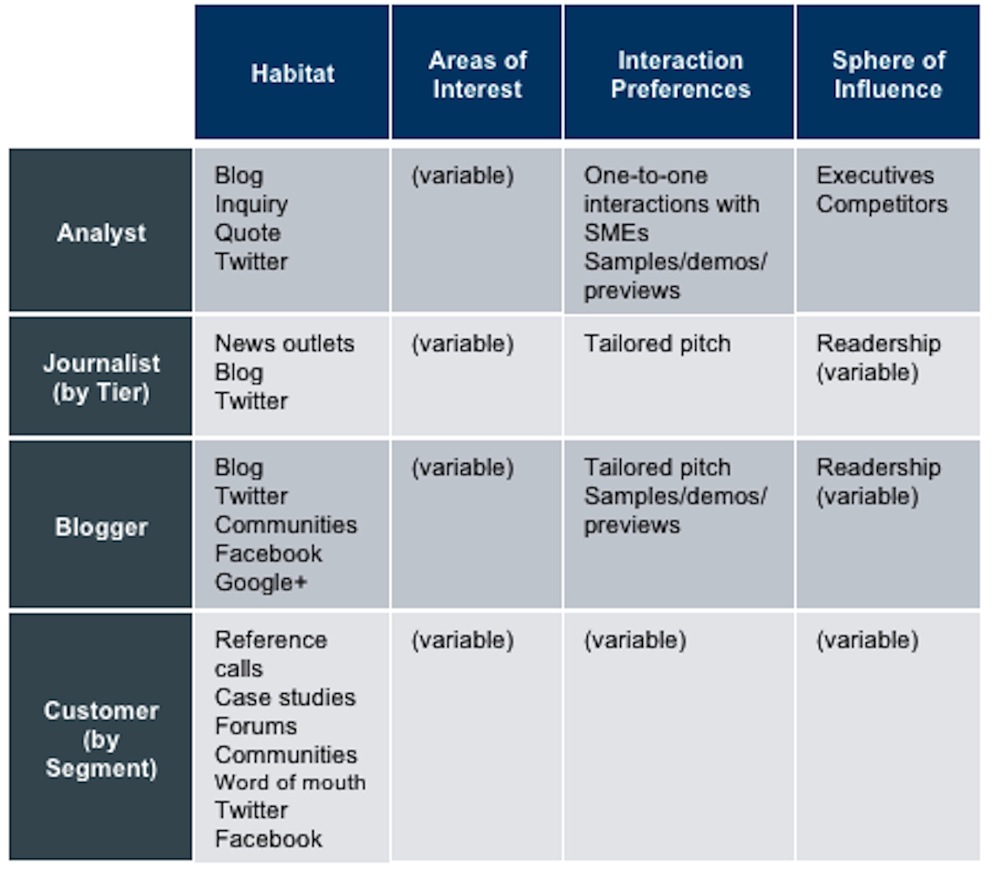Influencers Are People, Too
Personas, however, are relevant for more than just buyers. It’s time that marketing professionals across the organization use personas to inform their efforts. This is most glaringly lacking in the context we refer to as influencer relations – the formal approach to identifying, engaging with, enabling, and building advocacy among the full range of modern industry influencers.
Personas are a hot topic for marketers these days, particularly product and solution marketers who are engaging in persona development to become more customer-centric in their overall thinking and approach. Personas help marketing organizations think of buyers as people with business issues and pain points that can be solved by products, but that are not originally expressed or conceived of in product language. Personas help marketers think beyond prospect accounts and remember that, ultimately, a person or group of people is making a decision.
Personas, however, are relevant for more than just buyers. It’s time that marketing professionals across the organization use personas to inform their efforts. This is most glaringly lacking in the context we refer to as influencer relations – the formal approach to identifying, engaging with, enabling, and building advocacy among the full range of modern industry influencers. In a world in which we have little external control over the brand narrative, communications professionals must influence, not wrangle, the way the narrative spreads through social and other digital channels. Thus we find ourselves in the classic public and analyst relations game of “influence the influencer” – with influencers including media and analysts, but also encompassing bloggers, online industry pundits and even vocal customers and employees.
The key to success in influencing and enabling influencers lies in a persona-based approach to this indirect marketing strategy – beginning with a simple, role-based mapping of influencers and their habitats, areas of personal and professional interest, interaction preferences, and sphere of influence (see the sample diagram below). This simple research and discovery initiative can help social media and communications teams begin to rationalize the influencer universe and develop more targeted and relevant indirect programs to activate and enable influencers in a way meaningful to the organization, influencers themselves, and ultimately, buyers.
